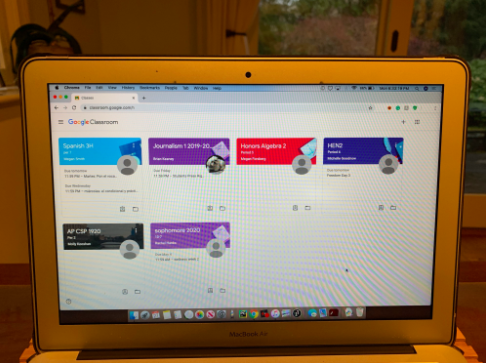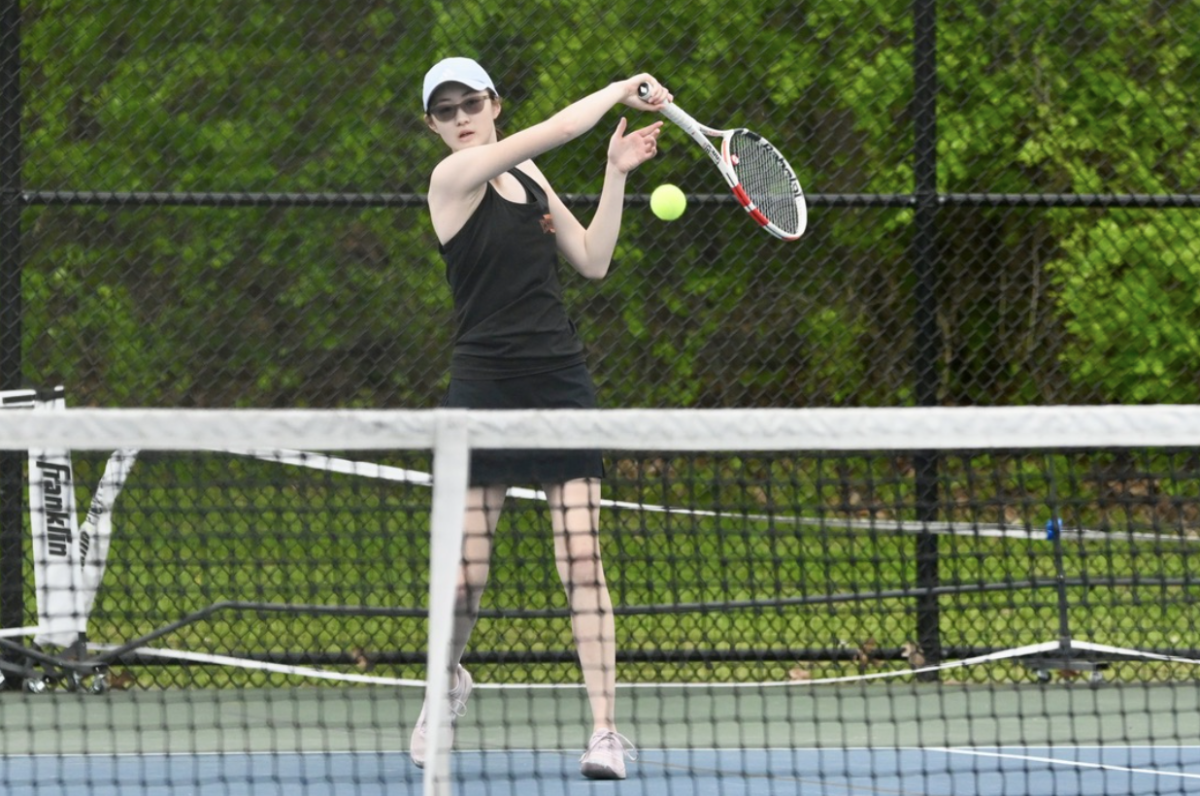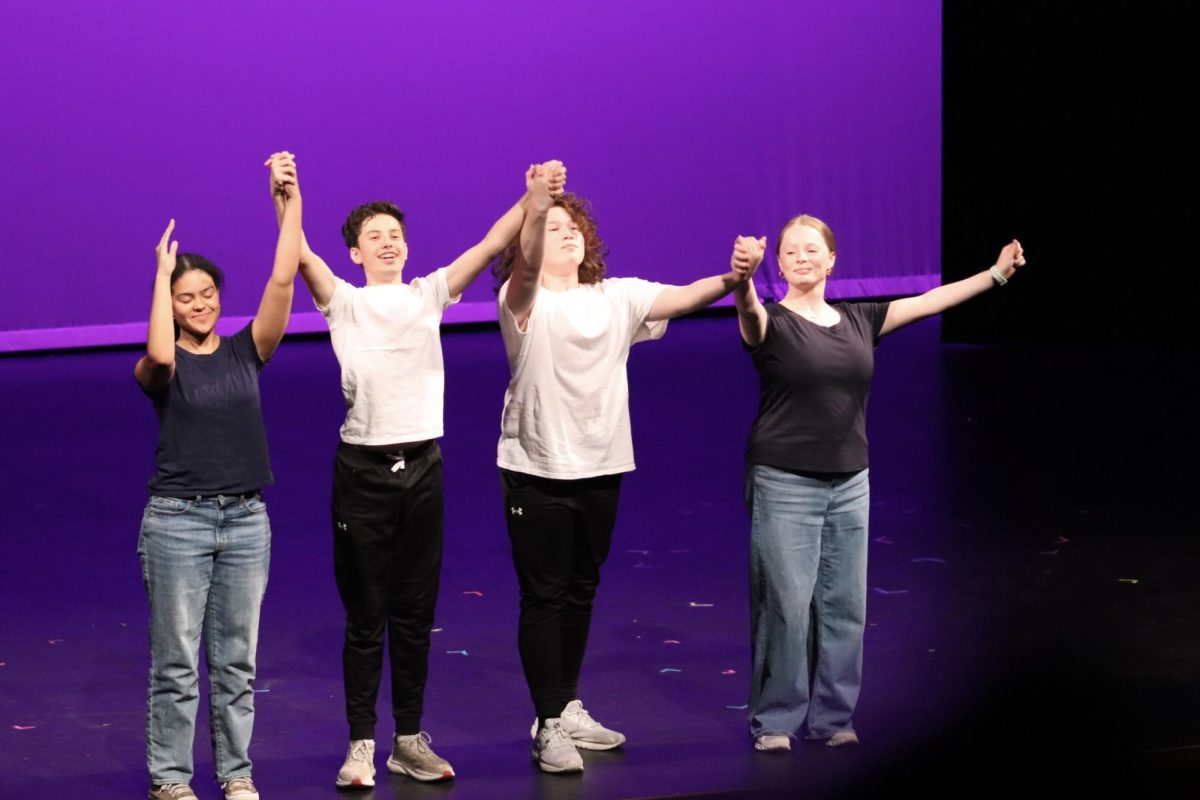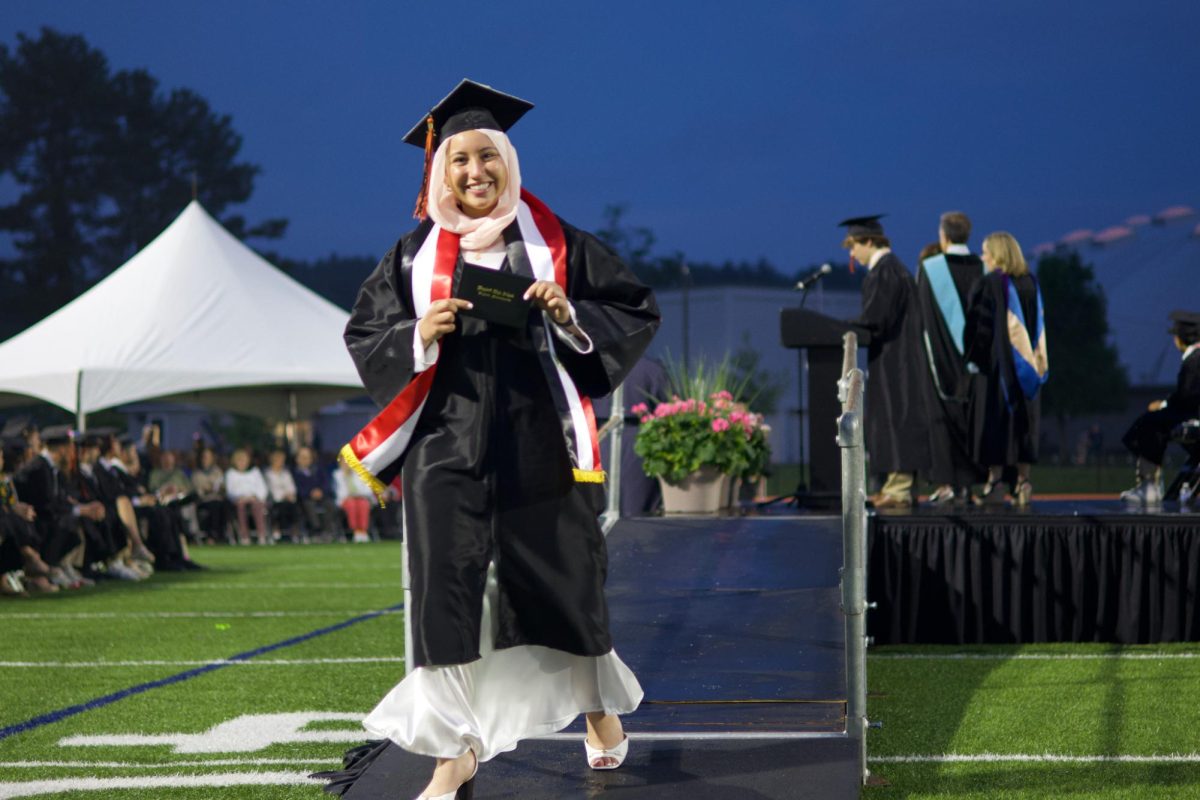The Other Side: Teachers affected by online schooling

Credit: Lindsey Brown
With school turning online for the rest of the year, teachers are forced to assign work via online applications like Google Classroom. “The curriculum is continuing as always, but many modifications have to be made to make it accessible online,” Biology teacher Dalia Dinno said.
May 12, 2020
With COVID-19 forcing the shutdown of school, WHS teachers are forced to adopt new ways to make their curriculum available for students online. Teachers have to ensure that they can keep assisting their students throughout the remote learning process.
One problem that teachers have encountered is the lack of face-to-face interaction in a classroom setting that leads to lack of participation and comfort from the students.
“In a class, students ask questions and I get a better sense of their understanding just by looking at their faces,” biology teacher Dalia Dinno said. “I can tell if I need to slow down or repeat something if I need to. Students seem to be more shy on [Google] Meets. They don’t speak as much and many turn off the cameras.”
Although during online meetings, Dinno reports there has been a lack of participation, she has seen a difference in engagement between phases one and two, when schoolwork became graded.
“Once the work was mandatory to get a pass, students started to get it done,” Dinno said. “I also think that many of us thought phase one was a temporary situation and we’d be going back to school eventually. But with time, it became clear that school online will continue for a longer period of time.”
Now that school has closed for the year, teachers need to completely adapt their lessons to fit the at-home format. Departments have weekly meetings and use a variety of online resources to help their students learn from home.
“The biology team has always worked together to get assignments and curriculum ready,” Dinno said. “That has not changed. Except now we do it online. We meet constantly and discuss the next move and try to find ways to alter our labs to an online format, if possible.”
World Language Department Head Nicole Haghdoust agrees with Dinno. Since teaching and learning languages is a very different process from the sciences, the World Language curriculum has needed to cut down on the amount of material they cover.
“World Language classes are very interactive and communicative as most students express that the number one reason that they take a language is to speak it,” Haghdoust said. “The communicative piece of the class is a little bit more challenging remotely so I’m trying to do small chat sessions.”
Haghdoust cannot interact with students like she normally does during school. She notes that teachers have to adjust to online learning, just like students.
“I think that just like in ‘regular’ school every student learns differently,” Haghdoust said. “There are some students who are thriving with remote education, others who are still figuring out how it works, and others who wish they were back in school.”
In addition to teaching their own classes online, some WHS teachers have to help their kids learn too.
“I thought going into this that I would have plenty of time every day to grade and return student work and post new assignments, but my wife and I end up spending a lot of each day guiding the kids through their schoolwork and keeping them otherwise occupied,” English teacher Peter Galalis said.
Galalis has three children under the age of 10 who go to Happy Hollow Elementary School, and only one has their own laptop. He needs to share his laptop with his second-grader in order for them to meet with their class.
“It is difficult to balance helping my own children do their schoolwork while also running my classes remotely every day,” Galalis said. “All of my synchronous class meetings are scheduled for the afternoons because my second grader needs my laptop to access his schoolwork.”
Even with the resources available to WHS, Galalis misses the interactions that he used to have before the pandemic closed the school.
“One of my favorite things about teaching is being face-to-face with other people for most of the day, and that’s gone now,” Galalis said. “As lucky as we are to have all this technology, it’s still not the same. [I am] feeling pretty sad about it.”





![Last Wednesday, the Wayland School Committee gathered to discuss a number of topics regarding the health curriculum and Innovation Career Pathway course. Another large topic of conversation was the ways to potentially mitigate distracting cell phone usage. "These [phones] are going to distract your learning and social relationships," Superintendent David Fleishman said. "That's concrete right there."](https://waylandstudentpress.com/wp-content/uploads/2025/06/Screenshot-2025-06-04-at-9.49.31 PM-1200x886.png)

























